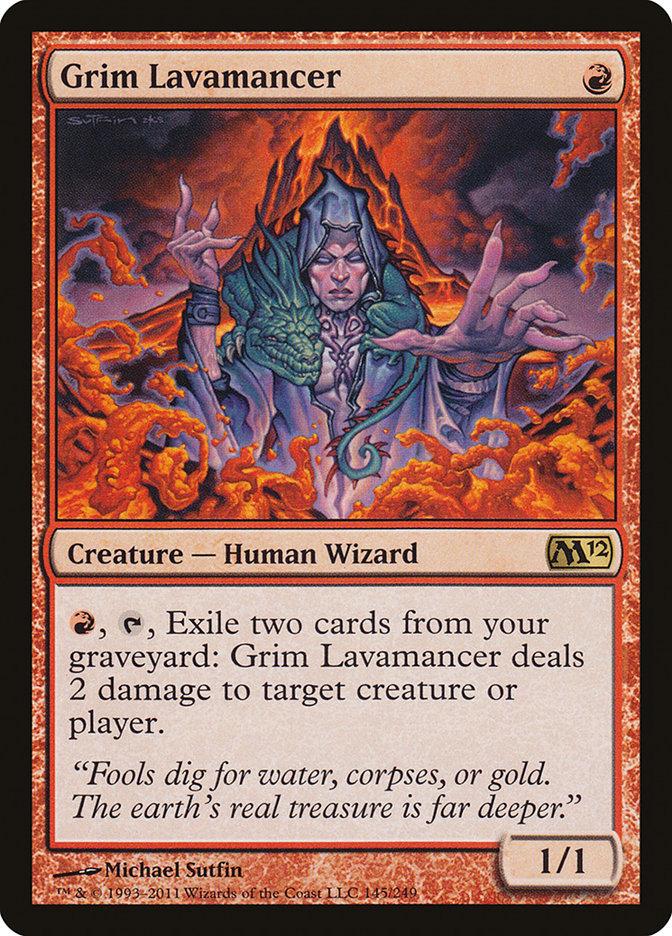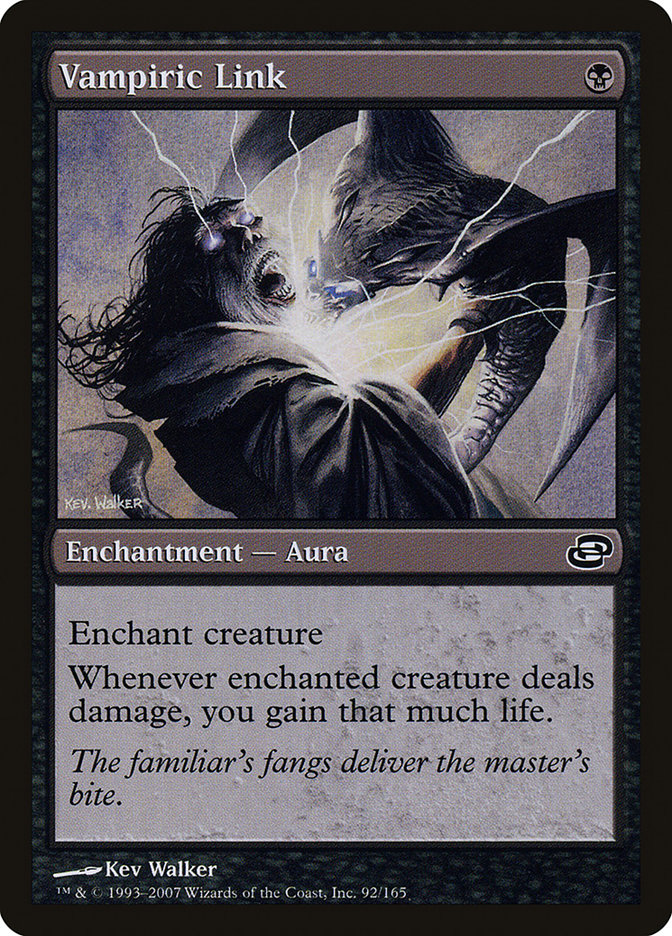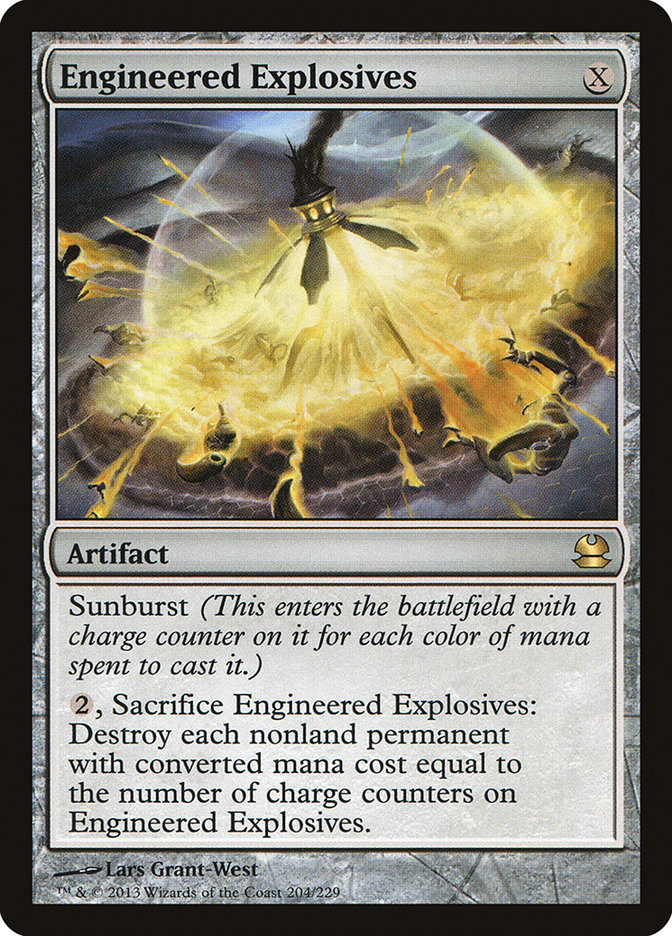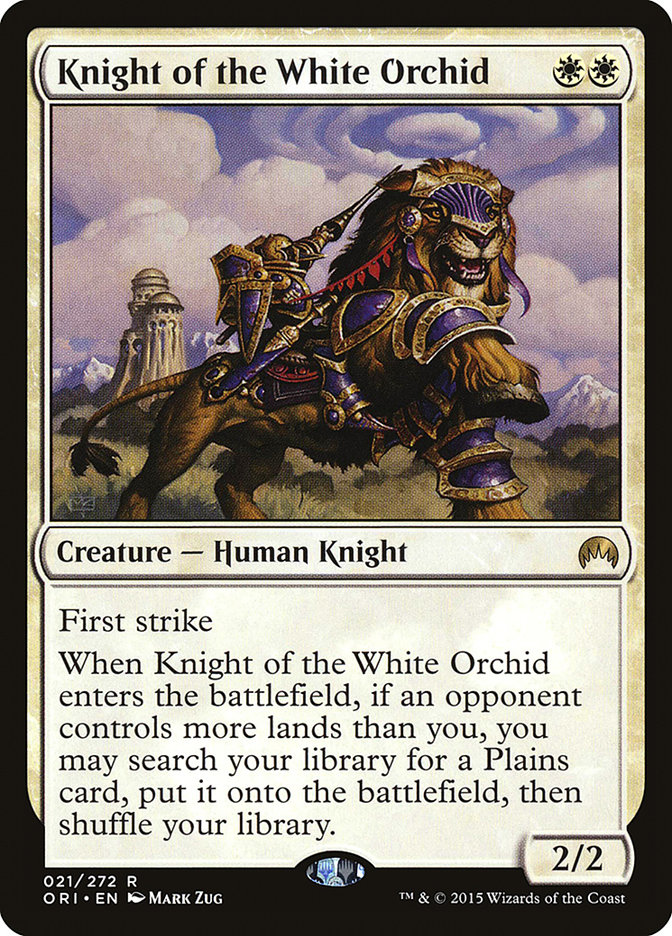The next two weeks are going to be challenging.
Thursday morning I’ll be flying into Indianapolis once again to participate in the Modern RPTQ on Friday (AKA the best thing ever) followed by the Standard
Grand Prix main event on Saturday. The following week I’ll be forced to change gears to play in the Legacy Grand Prix in Seattle.
This is rather daunting, and although I’m not completely confident in all my choices, here’s where I’m at currently through both a bit of theorycrafting
and playing.
Modern
Modern is tough.
On the one hand, it’s a format where you can do (mostly) whatever you want. For me, this has largely been flipping Jace, Vryn’s Prodigy and grinding my
opponents out as of late. The thing is, sometimes your opponents just kill you, no matter how many times you’ve given Serum Visions pseudo-Flashback or
caught a key card with an Inquisition of Kozilek. Modern is still inhabited by Urza’s real-estate, turn 2 Titans, Demons, and Wurms, with the occasional
Bogle blundering about. The decks I typically build aren’t very good at beating these strategies.
Unfortunately, RPTQs aren’t like an SCG Opens or a Grand Prix where picking up a loss stinks but you’re often afforded a few to spare. I can’t just fold to
these “random” decks, so I’m forced to adapt.
The traditional issue with my Modern Grixis Control decks as I’ve statednumerous times is closing speed. While they’re still quite strong at
burying stumbling opponents who are also fighting on a fair axis, there is some degree of difficulty with killing an opponent that isn’t in a timely
manner.
I started testing a few days ago by playing some leagues on Magic Online with Grixis Control, and I got destroyed. Then I tried a bunch of different decks
and kept losing. Finally, a bit frustrated, I decided to just “try out” Grixis Delver.
This was my list:
Creatures (14)
Lands (19)
Spells (27)
- 4 Lightning Bolt
- 2 Mana Leak
- 4 Serum Visions
- 2 Terminate
- 3 Remand
- 2 Dispel
- 1 Twisted Image
- 2 Gitaxian Probe
- 4 Thought Scour
- 1 Murderous Cut
- 2 Kolaghan's Command
Sideboard

I started winning a lot more.
Here are some of my observations regarding Grixis in Modern as it stands right now, and this Delver deck specifically:
-
Inquisition of Kozilek is a great card, but it doesn’t cover enough bases in a blue deck
. Against G/R Tron, Amulet Bloom, Grishoalbrand, or even just the more high-impact threats like delve cards and Cryptic Command, Inquisition just isn’t
doing enough right now. If you want to design your Grixis deck to kill your opponent with Splinter Twin, then Inquisition is great for getting you
there, but it’s not going to be able to pull enough weight playing fair over a longer contest. Thoughtseize is tough to support in blue maindecks due
to the life loss incurred. -
Dispel is the best Counterspell
. Mana efficiency is the most important aspect of playing a blue deck in Modern, as you’re typically either playing from behind or holding on to a
small advantage. As a result, Dispel is often times the best answer to opposing interaction. Further, the metagame has become a bit inbred towards
Dispel. If you aren’t utilizing it yourself, your opponents will be seizing initiative more easily. This has, to some degree, pushed expensive instants
like Cryptic Command further out of the format. -
Remand is the best spell against Dispel
. A large portion of blue mirrors involves winning exchanges over Dispel and Snapcaster Flashback. Remanding one’s own spell is an integral part of
wearing down opposing blue mages. -
Mana Leak (and Remand) is still good and gives blue decks a great deal of flexibility in a wide berth of matchups
. I know this sounds silly or obvious, but frankly, Mana Leak is down in numbers across the board. Gerry and I played a single copy in GP Oklahoma City
and it did nothing but impress. -
“Delver” has the best lategame of the fair blue decks because it floods out the least.
What I really mean by this is a ten+ cantrip package with a low land count. Many games will go very late, and when you are able to stop at seven lands
because the vast majority of them have been fetched from your deck, you will draw more action. Again, this sounds obvious, but it’s not entirely
intuitive when comparing the 23 land deck with four-drops to this lower to the ground version of blue decks. Of course, the reason this is even
remotely possible is the absurdity of the delve mechanic and the speed in which a high-velocity deck can deploy and protect them. The inclusion of
counterspells also goes a long way towards keeping opposing control deck’s “trumps” in check. While Glen Elendra Archmage is quite difficult to beat
with Inquisition, it is rather manageable with Mana Leak. -
Delver of Secrets sucks
. I knew this, but I guess I just had to re-learn it. Delver is incredibly difficult to flip in Modern. Additionally, a lot of the play patterns that
I’m interested in, particularly when in the blind as far as knowing how the matchup goes, don’t even encourage playing Delver on the first turn because
it will basically require you starting the game at 14-15 life, which can be a disaster against aggressive decks. There’s also not a huge pay off for
Delver actually living through the turn. Sometimes you’ll be rewarded with a 3/2 flier, which of course is great, but often you’re just stuck with
Merfolk of the Pearl Trident. I’d rather just play some number of Jace, whose upside for living is huge, even if my deck is no longer built
specifically with him in mind. -
Young Pyromancer is still incredibly medium
. I’ll get to him in a moment.
If I were forced to register my Modern deck at this very moment, I would use this list:
Creatures (13)
- 1 Grim Lavamancer
- 4 Snapcaster Mage
- 2 Young Pyromancer
- 2 Gurmag Angler
- 2 Tasigur, the Golden Fang
- 2 Jace, Vryn's Prodigy
Lands (20)
Spells (27)
- 4 Lightning Bolt
- 2 Mana Leak
- 4 Serum Visions
- 2 Terminate
- 3 Remand
- 2 Dispel
- 1 Twisted Image
- 1 Go for the Throat
- 2 Gitaxian Probe
- 4 Thought Scour
- 2 Kolaghan's Command
Sideboard

Let’s get the obvious question out of the way, “Why don’t you just play four Jace and zero Young Pyromancer?” Jace is a phenomenal card that I want to keep
playing with, particularly against other decks interested in getting on the board, but Young Pyromancer offers a unique effect and can simply kill my
opponent. Being able to generate a horde of chump blockers to buy time or to quickly clock an opponent is a valuable asset for Grixis and gives the deck
another angle of attack of going wide. I’m also a huge fan of Young Pyromancer in combination with the Thoughtseizes and other additional disruption from
the sideboard as, again, it is easy to keep most Modern decks off balance for a few turns, but you still have to kill them before they rebuild. Previous
iterations of Grixis Control could also basically never beat a Leyline of the Void, and other graveyard interaction was a major hindrance. Young Pyromancer
dodges all of these types of sideboard cards.
If I felt like I could reasonably play more copies of Grim Lavamancer, I certainly would, as the card has been nothing but excellent in all the decks I’ve
played with him in Modern, but there’s already a fair amount of stress to use the graveyard with Snapcaster Mage, Jace, and four delve threats.
The sideboard, for now, remains the biggest wild card, as there are a plethora of options. Vampiric Link is back, but as usual, I’m still not a huge fan.
Engineered Explosives also doesn’t have much synergy with the deck, but I felt compelled to try it, as it often showed up in Delver sideboards online. It
has been a reasonable catch all against decks like Affinity, G/W Hexproof, and Lantern Control and has earned its slot now that the deck has less emphasis
on “flashing back” spells.
Other major considerations include the second copy of Vandalblast, Nihil Spellbomb, and access to a sweeper like Pyroclasm.
It is entirely possible that I’m completely off base with my analysis of Grixis and its place in Modern, but until there are some major shake ups in the
format and players are still allowed to register Amulet of Vigor and Goryo’s Vengeance, I’m not entirely comfortable with the idea of showing up to a
tournament with just some Inquisition of Kozileks in my Grixis deck.
Standard
The short answer is that I still like G/W Megamorph.
The reality is that the results of GP Quebec City are incredibly worrisome for a Megamorph mage. While ramp is a matchup I don’t think I want to play,
Rally the Ancestors is something I know is a nightmare, and Pascal Maynard giving the archetype a top 8 is probably enough traction to get others on board.
Further, Jeskai Black has finally cemented itself as the de facto best deck, which is also something to consider when constructing a Megamorph list for
this weekend.
On the bright side, it would appear that (in the ironic sense of this article) Megamorph numbers are down, which is great since the mirror match isn’t a
place where large edges can be gained through preparation.
While Avatar of the Resolute is still a great card and continues to be excellent technology against Jeskai Black in traditional G/W shells, I had to start
my Standard preparation by taking Sam Black’s Bant Tokens for a spin.
There were some aspects I liked, and disliked. Oddly, I wasn’t a huge fan of the actual emphasis of the deck. Retreat to Emeria was too slow to make a
significant impact, got trumped by the cards that are already good against you (large fliers), and was vulnerable to Dromoka’s Command in the
pseudo-mirrors. While Retreat certainly gave the deck a great deal of power in the lategame, getting to that point was difficult, and the G/W decks already
have significant strength at that stage in the game.
What did impress me was the deck’s ability to leverage Wingmate Roc so effectively when combined with Dispel. Sam’s updated list also utilizes Knight of
the White Orchid to make facilitating the splash much easier.
It should come as no surprise that Brad Nelson was already hot on this angle, and I’m sure he will be discussing his efforts en route to a top 8 in the
MOCS this past weekend with a Bant Megamorph deck soon.
Dispel is excellent against Jeskai Black and Rally the Ancestors. Disdainful Stroke is a potent tool against Rally the Ancestors and Ugin, the Spirit
Dragon. Megamorph mirrors are down in number, and Tom Ross’s analysis from two weeks ago concluded that his Bant list only suffered
heavily in the mirror. It’s fairly easy to see where this is going:
Creatures (23)
- 3 Knight of the White Orchid
- 3 Wingmate Roc
- 1 Warden of the First Tree
- 4 Den Protector
- 3 Deathmist Raptor
- 3 Nissa, Vastwood Seer
- 2 Archangel of Tithes
- 4 Hangarback Walker
Planeswalkers (4)
Lands (25)
Spells (8)

I still have a ways to go with the fine-tuning, and I would certainly agree that aesthetically this list is lacking, but we finally have a sideboard devoid
of Draft-common rejects!
The first thing I should note is that the blue splash is significantly easier with Knight of the White Orchid, and as a result skews the deck heavily
towards white.
This has several implications: Avatar of the Resolute becomes unplayable, Warden of the First Tree is much worse since we are heavily incentivized to fetch
a Battle land on turn 1, and Archangel of Tithes is far more attractive.
Before I discuss the Angel, I should note further the odd number of Knights and Dromoka’s Commands. This iteration of Megamorph is going to get off the
ground a little slower than my Pro Tour list. As a result, especially on the draw, Dromoka’s Command will likely not have a great host, hence my inclusion
of another Silkwrap, which still remains excellent against Jeskai Black.
I never want to draw two copies of Knight of the White Orchid, and this is a big reason for the singleton Warden. I still want a minimum number of early
plays, but to support this line of thinking, my list looks a little ugly.
Archangel of Tithes is incredibly powerful, and with Autumn Berchett’s 9-1 performance at the Pro Tour sporting zero copies of Gideon, Ally of Zendikar and
three maindeck Archangels, it’s fair to say the overlooked mythic has legs. Our testing before the Pro Tour included the Angel in our sideboard, and
although she was excellent, it was just impossible to play both her and Avatar of the Resolute.
Not only does Archangel once again help with Megamorph’s weakness to fliers, but she is a great tool for fighting Atarka Red decks, which may be back on
the rise following Eldrazi Ramp’s success, and for breaking serve in Wingmate Roc wars. If played on turn 4 on the draw, it is impossible for your
Megamorph opponent to both pay the Archangel’s tithe to attack and cast Wingmate Roc in the same turn.
I’m excited to see where final tuning of this archetype will get us before the beginning of GP Indy.
Legacy
Okay, I admit it, I’ve barely gotten to this one. I have another whole week, and two other formats is a lot on my plate!
I did watch a good portion of #SCGSTL this past weekend, however, and for the most part it looks like we are back to living in a pre-Dig Through Time
world.
If time permits, I will still be trying to break the deck I wrote about two weeks ago:
Creatures (10)
Lands (19)
Spells (31)
- 4 Brainstorm
- 4 Goryo's Vengeance
- 4 Force of Will
- 4 Entomb
- 4 Shallow Grave
- 2 Innocent Blood
- 4 Ponder
- 2 Thoughtseize
- 3 Spell Pierce
Sideboard

Undoubtedly, a big part of pushing this deck will be trying to incorporate some fast mana. While Dark Ritual is powerful in conjunction with Jace, Lotus
Petal actually enables you to play Jace on the first turn.
In a similar vein, traditional Reanimator decks have been showing up utilizing the most
powerful
expensive card in Magic Origins, and I’ll be sure to give those a try.
Shardless Sultai appears to be public enemy #1 in Legacy moving forward after the bannings as it is no longer food for the Omni-Tell menace. While this may
prove a catalyst for a major shift towards combo decks as the finals of #SCGSTL reflected, there could be a resurgence in another predator of Shardless
Sultai: Esper Deathblade. Of course, I want to give it a prodigious twist.
Creatures (13)
Lands (23)
Spells (24)

True-Name Nemesis and Stoneforge Mystic have been noticeably absent from Legacy for some time as Dig Through Time often left them in the dust. If everyone
is back to playing grindy value-oriented games, then I can’t imagine there being something much better than flashing back Unearth one of the
aforementioned.
While it was nice to have a week off, I’m ready to get right back into the thick of things over the course of the next month. I may not know exactly what
I’m playing, but I can’t wait for the treat of being able to play in another Legacy Grand Prix the following week.
Best of luck at #SCGDFW or your RPTQs this weekend!





